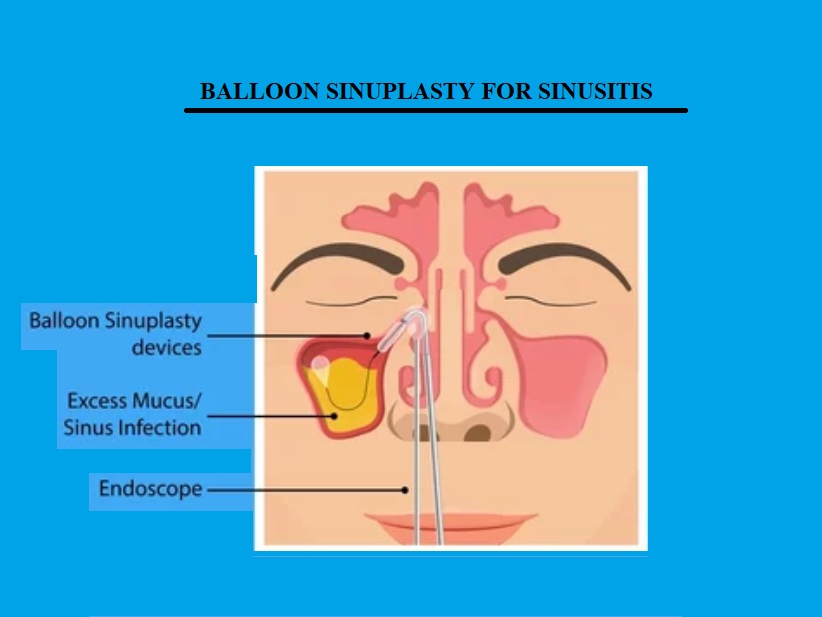INTRODUCTION
Sinuses or Paranasal sinuses (PNS) are air-filled cavities placed at different areas in the face, especially around the nose and cheek.
These cavities regularly produce thin watery secretions that pour into the nose that kills and washes out the bacteria and other microorganisms accumulated in the inner lining of the nose.
These sinus cavities, when get infected due to allergic reactions or due to various other reasons, lead to the blocking of the openings carrying the secretions to the nose. This results in the accumulation of all the secretions inside the sinus cavities.
This fluid stagnation inside the sinuses then gets thickened due to their bacterial growth. This forms a thick mucus that leads to symptoms like —
1. Headache
2. Headache that aggravates on bending forwards
3. Runny nose
4. Lacking a sense of smell
5. Green or yellow colored mucus discharge
6. Fever
7. Giddiness
8. Pain in the upper jaw
9. Swelling/Redness under the eyes and cheek
10. Pain or pressure around the eyebrows or behind the eyeballs
All the above-mentioned symptoms are quite common in nearly 134 million Indians facing sinus infections today.
But what differs is the treatment called for each individual depending on their age, the severity of the disease, and how often it shall occur.
The treatment for sinus infection or sinusitis is a step-by-step process as the following:-
1. Home Remedies:
Using humidifiers, nasal irrigation, and steam breathing.
2. OTC Medicines:
Over-the-counter tablets or painkillers, like aspirin or ibuprofen, are available in the drugstore and are safe for consumption as given by the doctor.
3. Antibiotics and other advanced medicines prescribed by the doctor.
4. Lastly, Surgery
Some of the types of sinus surgeries are:
– Balloon Sinuplasty
– Functional Endoscopic Sinus Surgery (FESS)
– Turbinate Reduction Surgery
Usually, home remedies, OTC, and antibiotics should cure the sinus completely. But if they fail to do so or if they cure the infection only for a small period of time where the sinus keeps recurring again and again (chronic sinusitis), surgery is recommended.
One such popular surgery for sinusitis is – BALLOON SINUPLASTY, also called balloon sinus surgery.
BALLOON SINUPLASTY:-
Procedure:-
- It is performed by an ENT specialist.
- The doctor will first administer anesthesia after having a detailed conversation with the patient regarding all the procedures, precautions, side effects, anesthesia preferences, and so on.
- To begin with, the doctor will first insert a wire to which a tiny torch light is attached at one of its ends. This light helps to see the components inside the nose and sinus region in order to proceed with the surgery.
- Next, they will pass a balloon catheter ( a thin tube with a flexible balloon attached to it) into the nose at the region where the sinus pipes were expected to open.
- The balloon is inserted at this region to help in unblocking the previously blocked sinus.
- When the balloon is inserted, it is inflated, which widens the opening of the sinus that draws out all the infected thick mucus.
- Rinsing the nasal cavity with saline water prevents further infection. This relieves the nose and reduces sinus infection alongside headache, runny nose, and other symptoms.
- As per the observation, balloon sinuplasty is a procedure that does not include any cutting or removal of bones or tissues.
- Thus, it is known to be one of the safest and most affordable forms of surgical treatment for sinusitis.
RECOVERY AND AFTERCARE OF BALLOON SINUPLASTY:-
Recovery from the surgery will take at least take a few weeks time. In this period, there are certain symptoms that one can commonly see, but there is nothing to fear about it, as they subside within 5 to 7 days.
They are:-
- Blood leaking from the nose
- Fatigue
- Swelling
- Congestion
The precautions to be taken after the surgery are:-
- Do not blow your nose for at least 24-72 hours from the time of surgery.
- Avoid doing any rigorous physical activity that will make you breathe at a faster pace, as this is not good after surgery.
- Sleep with your head at a higher level to avoid fluid discharge.
- Take the antibiotics and other medicines prescribed by the doctor regularly.
- Practice saline irrigation on the recommendation of the doctor.
RISK FACTORS AND COMPLICATIONS OF BALLOON SINUPLASTY:-
- In some cases, there are chances that the connection between the nose and brain gets affected during the procedure due to some complications. It also causes leakage of brain fluids into the nose, which can cause MENINGITIS. This happens very rarely, and in such cases, the complication is usually fixed before closing the surgery.
- Swelling in the nose after the surgery could persist for many days, and it might also alter the shape of the nose.
- If not cleansed regularly, it can again get prone to infection.
- In certain people, it might alter their ability to sense smell.
THANK YOU
MEDICAL ADVICE DISCLAIMER:
This blog, including information, content, references, and opinions, is for informational purposes only.
The Author does not provide any medical advice on this platform.
Viewing, accessing, or reading this blog does not establish any doctor-patient relationship.
The information provided in this blog does not replace the services and opinions of a qualified medical professional who examines you and then prescribes medicines.
And if you have any questions of medical nature, please refer to your doctor or qualified medical personnel for evaluation and management at a clinic/hospital near you.
The content provided in this blog represents the Author’s own interpretation of research articles.
